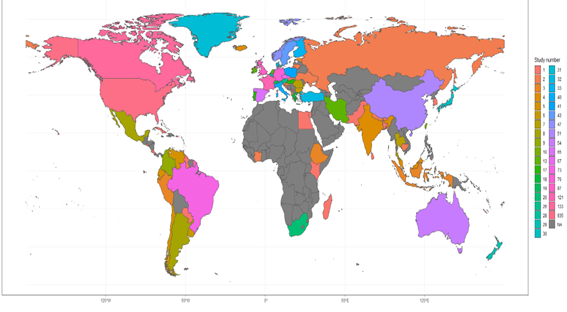Connecting fish and people: Protection of Fish Biodiversity in Mountainous areas of Central Asia
November 3, 2023
Small-scale hydropower (SHP) is not extensively exploited in Central Asia despite considerable potential to satisfy unmet electricity demand. The Mountains of Central Asia hotspot consists of two of Asia’s major mountain ranges: the Pamir; and the Tien Shan with the total area covered of about 860,000 square kilometers. Much of the biodiversity and natural ecosystems are in the remote mountain areas and have still to be better studied. Therefore, any human impact directed towards the change of aquatic habitat on these ecosystems have to be thoroughly assessed before implementation.
In light of the above, a key aim of TIIAME NRU’s research was to study the ecological conditions and diversity of the ichthyofauna of mountain and foothill sections of rivers that are promising for the development of environmentally sustainable small hydropower. A special attention within the project is paid to the particular importance of the conservation of the ichthyofauna diversity and habitat conditions as well as other aquatic organisms as an integral component of the sustainable functioning of river ecosystems.
To achieve the Hydro4U project objectives, it is key to perform studies on fish biodiversity, allowing the identification of key species of conservational and economic value, key river habitats based on, e.g., morphological river types or specific river sections, and legal protection sites.
To this aim, the team of TIIAME NRU conducted a series of “Central Asian Big Highlands Expeditions” to assemble baseline data on fish biodiversity and population assemblages, distribution and movements in rivers of CA, including information on measured chemical parameters. These field surveys also enabled knowledge exchange with Central Asian scientists and stakeholders.
To carry out the planned research, a special series of expeditionary research was organized in the mountainous regions of Central Asia. Field studies have been conducted in cooperation with regional research institutions and ichthyologists from Fergana and Termez state Universities (Uzbekistan) and Biological institute of Kyrgyzstan Academy of Sciences. Famous German ichthyologist, Dr. Joerg Freyhof from the Natural Museum of Berlin has participated in spring field studies as well.
To perform the listed tasks, the TIIAME NRU Team has conducted large-scale preparatory work since the end of 2022 – beginning of 2023. More than 50 preliminary planning sites throughout the whole Central Asian highlands were defined.
Before starting our surveys, we faced problems with obtaining permission for electrofishing. After long discussions and organization of two workshops dedicated to explaining the pros and cons, sampling permits for Uzbekistan and Kyrgyzstan were handed out eventually. TIIAME NRU is still aiming to acquire permits for ichtyological studies in Kazakhstan and Tajikistan. Therefore, here we provide data on the two republics of Kyrgyzstan and Uzbekistan.

In general, all research tasks have been fulfilled, despite the difficulty of visiting some distant upstream sections of mountainous rivers due to absence or very bad quality of roads. As a result of conducted field surveys, today we have collected large field data on fish diversity, taxonomy and ecology, as well as hydrology of more than 50 river drainages in Kyrgyzstan and Uzbekistan. Also, for the first time, the main key fish species in upstream sections of Central Asian Mountain rivers have been revealed. The identification of key species to be protected during implementation of different hydrotechnical constructions, including SHP, has high importance for the protection of wildlife.
The TIIAME NRU Team has also continued telemetry studies in Shakhimardan river basin to establish fish migration patterns in connection with the construction of fish passages on water intake and water fall in Koksu river. Results of conducted research have been presented in meetings and conferences and also published in regional journals.
Author: TIIAME National Research University
Picture credits: Erkin Karimov






